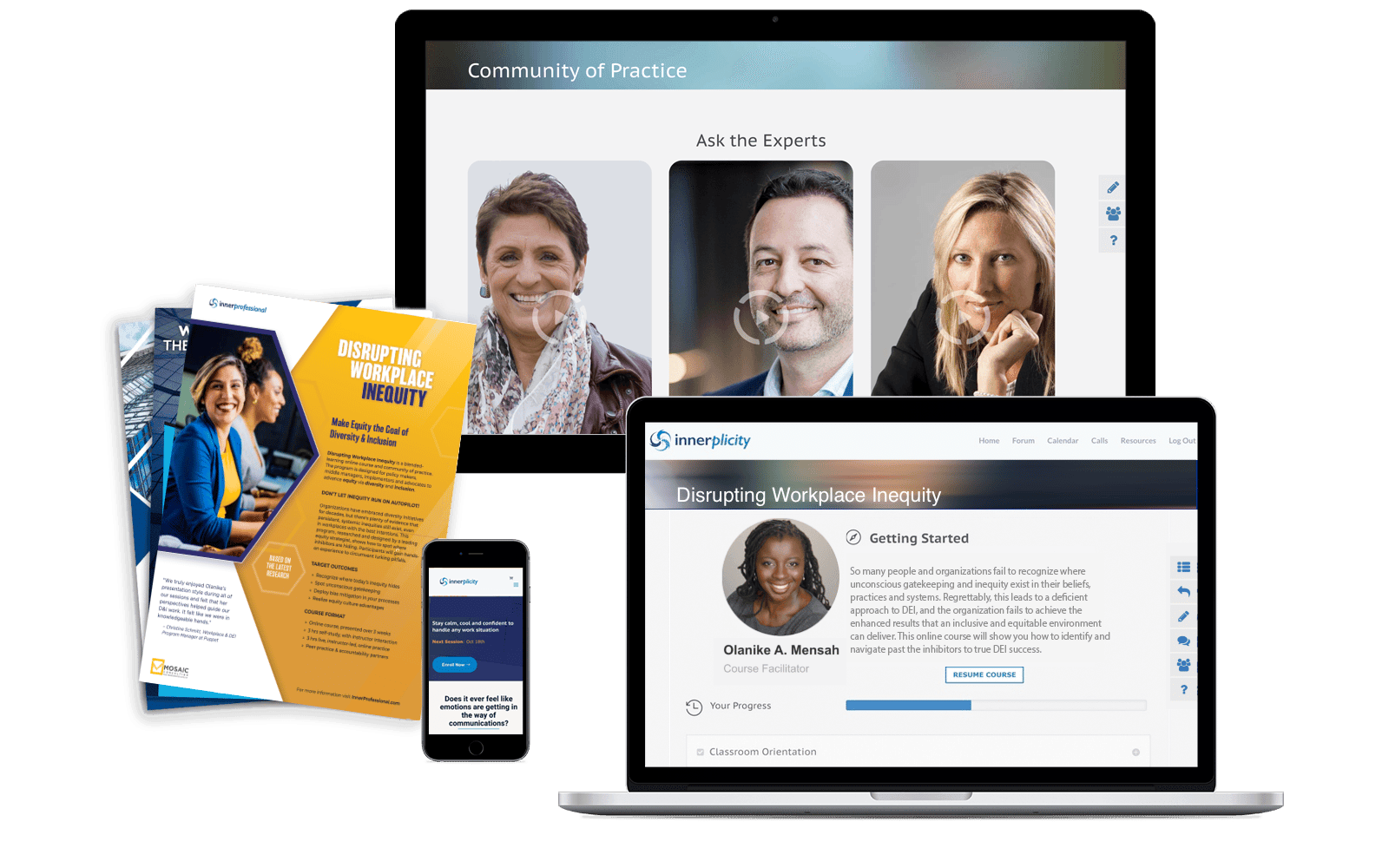Committing to a Strong DEI Statement
Part 2 of 3
– 4 min –
In my last blog, I talked about the difference between making statements about change and actually making a true and deep commitment to implement changes.
The most important element of a good DEI statement is committing to the difficult and unending work of embedding equity into every aspect of your workplace. Your DEI statement is useless if you’re not totally committed to implementing the changes.
With that goal in mind, I list below the elements I like to see in a solid DEI statement.
1. Commitment. I can’t repeat this often enough — you’ve made a true commitment to embed equity into your workplace and you mean it.
2. Acknowledgement. Your statement acknowledges the hard truths. Specifically, you should name how injustice and inequity have taken shape in your specific industry and, even more courageously, in your specific workplace and institution. [eg. College Spring]
3. Connection. You explicitly connect your workplace values and beliefs to the statement. If you have a value or a belief that is human-centered (e.g. teamwork, unity, being stronger together, doing the right thing), you can tie that value directly to your DEI efforts. Any new initiatives are simply another way that you are exercising that particular value. [eg. RWJF]
4. Vision. We need to be visionary because we are co-creating a new reality, one that doesn’t yet exist. adrienne maree brown, author, amazing human and more, talks about how this exercise is akin to creating science fiction — we are envisioning a future that doesn’t exist and are working to make it so. Boldly envision going where we haven’t been and doing your part as a workplace to push us all towards that vision, towards being better.
5. Transparency. Share specific activities and goals. Discrimination, bias, and inequity thrive in the dark. Be transparent! Your statement should include information about where you are, where you hope to be specifically, and what you’re doing to get there. If you’ve completed a belonging survey where you’ve got a result that is representative of where you are (e.g. a 73% favorability score, or a gap of up to 20 points between your dominant group and a non-dominant group), share that. Share targets such as aiming to close that gap within a certain timeframe and share what you are doing to address that gap. Be transparent about your numbers, strategies, and what they’re doing to bring your vision to fruition. [eg. Loom, HubSpot]
6. Stance. Communicate a stance, not just a statement. Workplace equity is not a project or initiative, it is an ongoing and iterative engine that will be key to the success of workplaces of the future. Some statements can come across as very static. I appreciate statements that come across more like a stance. A stance is more complex and dynamic. It sends a message that you’re taking stock of the situation continually and shifting to address issues as we go along. It sends a message that you’re going to continue to work hard to address the problem of inequity and injustice wherever you find yourself as an institution. A stance communicates a message of humility that whatever you know today, you will know more tomorrow — and therefore, you will evolve to meet the needs and challenges that present tomorrow. We are not solving all the -isms that have been socialized and embedded in us for hundreds of years by Q3 of 2027 or whatever. We are communicating our stance in a humble and committed way.
7. Commitment. Oh wait, I said that already! But I’m saying it again just in case some of you didn’t hear me the first couple of times! You’ve made a true commitment and you mean it. You’re not just going to talk about making changes — you’re going to actually do the work to make workplace equity happen.
In my next blog, I’ll talk about what I think the word ‘commitment’ really means, as I’ve come to realize that the word doesn’t mean the same thing to all of us.
Olanike A. Mensah, CEO, Mosaic Consulting
Olanike is a strategist and executor rolled into one, experienced in applying the Diversity, Equity and Inclusion (DEI) lens to all aspects of workplace management and at any stage of DEI development. Her 20+ years of experience spans corporate and non-profit organizations operating at local, national, and international levels. Learn more »
Trending
600 Million Breaths
- 5 min - It was a beautiful summer night in Chicago. Hot during the day but, once the sun...
Linking Uncertainty to ESG
- 5 min - If we know anything for sure, it is that the business environment will continue...
Why Is This Happening “For” Me?
- 2 min -We all face unwanted challenges in our life from time to time. And as a coach, as you...
Linking Uncertainty to ESG
- 5 min - If we know anything for sure, it is that the business environment will continue...
FEATURED COURSE
Disrupting Workplace Inequity
Empower your diversity, equity and inclusion advocacy. Learn where and why top DEI inhibitors exist or re-emerge. Apply proven practices to remedy and prevent unconscious bias and gatekeeping.
October 24, 2022
Instructor-Led Course
3-Weeks Online
8hrs Est. Course time
Peer-group Networking



